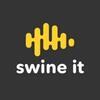Explore all the information on
Poultry behavior
Knowledge of the behaviour of the stock and the application of that knowledge in the care of the stock plays an important part in the maximisation of production efficiency of a poultry production enterprise. In addition, the management of the domestic fowl has received considerable attention over recent years from the community, particularly animal liberation groups, because of the way that commercial poultry management systems have intensified. As a consequence, the study of poultry behaviour is important to the unit manager, not only to ensure that the welfare of the birds and production efficiency are maintained but also to minimise the influence of what is often uninformed debate. Behaviour is the way that animals respond to the different stimuli they encounter in their environment. The stimuli may be from other birds, their environment, people or any other thing or occurrence. Aggression and feather pecking or plucking are the two most common behavioral problems in chickens.
‘Smothering’ in poultry occurs when birds mass together, often on top of each other, resulting in death from suffocation (Bright and Johnson, 2011). The small number of reports documenting the incidence of smothering indicate that it accounts for a substantial proportion of overall mortality in free range layer flocks (Barrett et al., 2014; Bright and Johnson, 2011). In 2019 Australian Eggs Limited funded the Animal Welfare Science Centre and the Veterinary Epidemiology...
Comments : 0
Recommendations: 0
Introduction Every animal production system experiences stress because of the numerous stressors on the farms. Stress is a biologically adaptive response to re-establish homeostasis (1). Heat stress is a variant of environmental stress caused by an increase in environmental temperature (and humidity) beyond the thermotolerance of an animal. Poultry birds possess a narrow range of thermoregulatory thresholds and are sensitive to environmental temperatures, which can pose as a...
Comments : 0
Recommendations: 3
Stocking density is a critical factor to consider for optimum welfare of commercial broilers Stocking density is typically defined in terms of the number of birds per unit area or the amount of space provided on per bird basis. In commercial production, stocking density of a broiler...
Comments : 1
Recommendations: 0
Spondylolisthesis, often called ‘kinky back’, is a deformity that affects broiler chickens’ spines. The deformity occurs in the fifth and/or sixth vertebrae (T6) and leads to spinal cord compression making it hard for birds to walk, and in severe cases it can cause...
Comments : 0
Recommendations: 0
1. Introduction Animal welfare is a fundamental component of sustainability, agricultural development and food security. In order for a livestock system to be sustainable, it should be sustainable economically, environmentally and ecologically, and at the same time, it should be accepted ethically and socially [1–3]. Today, a product of animal origin is not considered sustainable unless the social demand for welfare of the production animals is satisfied [1]. Animal...
Comments : 0
Recommendations: 0
1. Introduction In recent years, the poultry sector has been developing rapidly worldwide to meet the growing consumer demand for poultry meat and eggs. Chicken meat is low in saturated fat and rich in protein, vitamins and minerals [1]. Similarly, a hen’s egg is the most affordable source of animal protein and constitutes a complete and highly nutritious food with significant health benefits for consumers [2]. It is estimated that animal-based food demand will grow by...
Comments : 0
Recommendations: 0
1. Introduction In light of the challenges posed by climate change, economic crisis, overpopulation, and high global demand for protein, poultry production emerges as a more environmentally friendly option compared to meat from livestock. It has a lower impact on greenhouse gas emissions and demonstrates higher conversion rates [1]. Additionally, poultry production requires fewer resources and has a faster production cycle, making it an appealing protein source [2]. However, the...
Comments : 0
Recommendations: 0
Visual assessments for health and welfare of broiler flocks are regularly performed by farm staff walking through the shed. However, common welfare indicators like footpad dermatitis and hockburn require manual handling of the flock and an automated measurement is desirable. There is potential for automated camera monitoring to complement human inspections for detection of health and welfare conditions and perform additional flock monitoring tasks. A proof-of-concept machine vision system...
Comments : 0
Recommendations: 0
Introduction Summer and Disease The mercury is soaring high throughout the country, and it seems there is no respite soon. High environmental temperature leads to heat stress. Heat stress can lead to various harmful impacts on livestock productivity, such as high animal morbidity, mortality, and reduction in growth performance, directly resulting in dramatic economic losses to the livestock industry. Heat stress and transportation or shifting from EC shed to the...
Comments : 2
Recommendations: 2
What are some management solutions to address heat stress? Hear what Andras Palla, Regional Technical Manager-Poultry at Trouw Nutrition Asia Pacific, has to say about it...
Comments : 0
Recommendations: 1
How does heat stress in poultry impact overall performance, productivity, and the quality of meat or eggs? Andras Palla, Regional Technical Manager-Poultry at Trouw Nutrition Asia Pacific responds this question
...
Comments : 0
Recommendations: 1
While summer spells fun for most of us, it’s a little different for our poultry animals such as broilers and laying hens. High temperatures cause drops in production, dehydration and heat stress which may lead to more problems like foot pad dermatitis, respiratory symptoms, shell quality problems and even death. So let's take extra care to ensure poultry welfare by providing them with easy access to clean water, shade, and proper ventilation to prevent heat exhaustion. Make sure to monitor...
Comments : 0
Recommendations: 1
Most people are very familiar with the severe consequences that heat stress can have on poultry (see our previous newsletter), but cold stress can have severe production and economic consequences as well, leading to reduced egg production, reduced survivability, suppressed development and...
Comments : 0
Recommendations: 1
Our Technical Manager for Poultry, Andras Palla, discusses the effect of heat stress in poultry especially in laying hens. Understand how heat stress affects egg production and how to mitigate the effect of temperature related issues in the farm....
Comments : 0
Recommendations: 2
Piling is an abnormal behavior commonly observed in commercial laying hen flocks. Piling occurs when birds crowd together, usually on top of one another, in a densely packed manner. A piling event may or may not end in smothering. Smothering occurs when one or more birds die due to suffocation from piling. Piling and...
Comments : 1
Recommendations: 0
Human-animal interaction is the mutual and dynamic relationship between a human and an animal where the animal perceives human interaction as degree of relatedness or distance and vice-versa. Human beings have domesticated poultry species for eggs and meat production. Domestication has favored tameness in animals, however,...
Comments : 0
Recommendations: 0
American and European companies are pledging to move to include slow-growing broiler chickens for production, which means they will use broiler chickens with less efficient growth rates in their production systems. Slow-growing strains show improved welfare outcomes compared to conventional ones. This newsletter...
Comments : 1
Recommendations: 0
The poultry husbandry landscape in the United States is rapidly evolving in response to public concern related to animal welfare. As the production systems become complex and the flock sizes increase, conventional welfare assessment methods can be inadequate. Technology can help us in that regard by reliably...
Comments : 3
Recommendations: 0
In the summer season, as the temperature increases, poultry suffers from the condition called heat stress, also known as summer stress. This is a condition of imbalance between heat generation and heat loss in the body. This condition not only brings poor performance in birds but is also...
Comments : 2
Recommendations: 4
Allowing poultry access to vegetated, woody spaces will benefit poultry welfare. One system that incorporates the production of vegetation and livestock, including poultry, is called a silvopasture system. Woody vegetation can provide a source of income for producers while providing preferred habitat for chickens. Silvopasture...
Comments : 0
Recommendations: 1



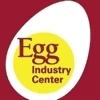




.jpg&w=3840&q=75)



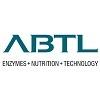

.jpg&w=3840&q=75)
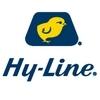

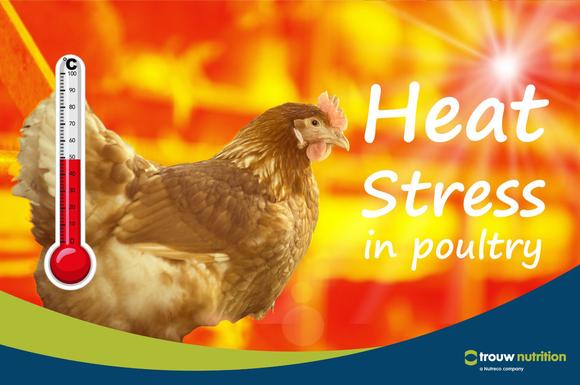



.jpg&w=3840&q=75)

